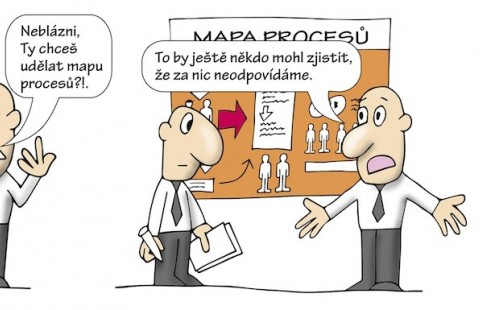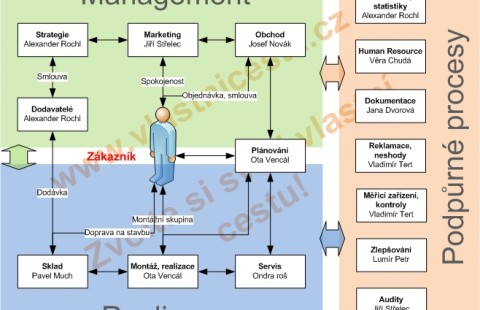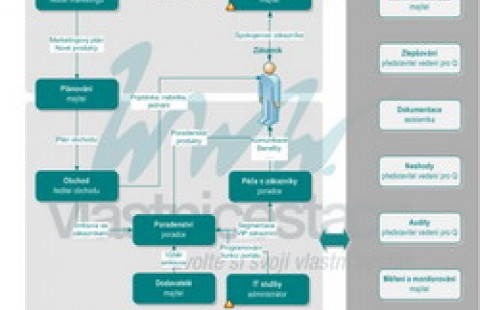You try to succeed, to provide your workers with future and job security, while at the same time you are being impeded by totally needless rumours and conflicts among workers from different departments and teams. As if they did not understand why the cooperation is so important. Indeed, there are always plenty of problems with the suppliers, the production, the customers ... ... How to settle conflicts when your teams are being at loggerheads?
You know this situation which is quite commonplace. “You just cannot make an agreement with them. No way. We will have to do the hard work for them again in overtime. They are absolutely incompetent and unable to provide the material in time.” Or, alternatively, another situation. “The production is totally incompetent. The customer needs the deadline date by the end of the month. And even if they have down-time, they do not want to give us the deadline we need.”
We hear nothing but speculation. Each team has their own strong arguments. When you put the teams together, it is going to end up in a dispute or they are unwilling to cooperate or even communicate. And even if you do find a meaningful solution, it frequently happens that one party indeed endorses it yet subsequently will not honour it. If that is the case, you have already got full-blown, longer-term problems on the team level. How to resolve them?
There is always a cause
At the beginning, it is appropriate to realize that - apart from the psychological causes, when two people simply do not match, have said something unpleasant to each other, or they may think the other guy is a place-seeker etc. - there are facts that have really founded the basis of the problem. Mostly, there is a factual cause which triggered the conflict before or is supporting it. At times, the present-day workers are not likely to remember the original situation. Here are a few typical potential causes of problems we have frequently come across in our practice:
- unclear working conditions in an individual/individuals
- cooperation among the teams has not been set
- flawed flow of the order execution
- formal rather than working processes
- a long-term problem waiting to be resolved by competent managers only
- meaningless regulation
- incompetence or ignorance of some workers (wrong choice of worker, insufficient teach-in, …)
- poor communication skills
- ….
I could carry on counting out the causes for quite some time. The fact is, however, that if we fail to identify and eliminate the cause, the conflict might be persisting on and on until the workers have resigned to its existence. That, nonetheless, may lead to dissatisfaction and undesirable labour turnover later. In practice, you frequently experience a combination of the causes. It is, then, necessary to prioritize and eliminate those causes whose removal will have the most positive impact on both the quarelling teams. It is key that the results are apparent in a matter of hours or days only.
Separate the trigger from the cause
Make observations and listen to both the teams. It is important to hear both sides of the story, yet have ready specific questions targeting the potential causes. Collect the proofs of the causes. Match the events they speak about with the facts while listening very carefully to the way they put their arguments. Distinguish what is an assumption, an idea or a trigger of their outrage. Find out what expression, word, attitude or ... will set their negative reaction in motion. You need to refrain from using these triggers in settling the disputes. Indeed, you do not want to step on the gas of someone´s negative emotions.

The Real | Interim Manager for Your Changes

Manager work model

Time management - making use of time effectively

Jak správně tvořit mapu procesů

Modelling and setting the processes and procedures - ISO 9001

Training - preparation of the SWOT analysis and strategy

Company Management System of Quality Step by Step - ISO 9001

Process map acc ISO 9001 - business offer

IT staff communication
At this point most managers will think - “Am I supposed to play a detective each time a problem comes up? I am expected to produce and make money, aren´I?” You are obviously right, but when your teams are at loggerheads this situation has occurred in 90% as a result of the manager´s insufficient work. If you do not settle the dispute, you are not going to get out of trouble. You will be left with the lower performance for good. You will either be hearing negative communication or teaching in new workers no end. Which is cheaper, then? The work described does not necessarilly have to be done at special meetings, but during your normal everyday business routine. When you are with the team, at regular meetings, at lunchtime etc. If you are a perceptive and good analyst, you only need a couple of negotiations with either team and you know what you have been after.
Make a timeline of the conflict
People are mostly easy to be led astray. While in the conflict, the facts get blurred as does the time sequence which is of the essence. They tend to forget what came first and what second. What could have been the cause and what the result. They also forget the event happened months ago and has not been repeated ever since. The time sequence plays a key role in disclosing the causes and the actual culprits (or instigators) of the conflict. Make sure to draw a timeline of the conflict marking all the events out carefully.
Engage an external moderator
If the conflict is extensive, far-reaching, it is appropriate to engage an external moderator. He or she is a person who does not know the history of the teams and is not emotionally involoved in the conflict. They are only looking for the greater good of the matter.
The moderator, while assisting people to find a solution, will let the participants in the conflict explain quietly their respective stances one last time (if that makes sense, of course). In doing so, he or she will strengthen the need to listen to others and make the team more interested in reaching a solution. An ideal moderator is someone who is well versed in management, who understands the system applied, psychology and, as the case may be, has got some experience in your particular branch, which helps as they do not have to be explained so much and has got a quick grasp of the context.
Get a solution scenario ready
Do not rely on the moderator resolving everything, though. The more people are interested in the conflict, the more opinions are expressed, the more complications appear. As based on the relevant findings, prepare in advance a scenario to resolve conflicts. It might not be a get-together workshop, though. As a rule, any team conflict requires a step-by-step solution. It is a quest for what either party is willing to accept. It may also include winning allies etc. Participation of a superior manager should also be considered, it is especially desirable in instances where such a manager enjoys natural authority and is respected by both the teams. At some stage, during finding the solution, it can be appropriate to let them present the added value and misssion of the individual teams. All depends on the condition of the company, their corporate culture etc.
A good solution demands quality preparation and, in the first place, separation of the facts from feelings and emotions. The sentence “The Logistics have planned it wrong and again failed to provide us with the right material” is just a communication which needs to be verified, and, if true, measures will have to be taken so that such a situation cannot be repeated. Be prepared each conflict requires a different approach to be resolved.
If you are interested in seeing the settlement of conflicts between teams from the psychologist´s point of view, go for reading the Konflikt mezi týmy.

